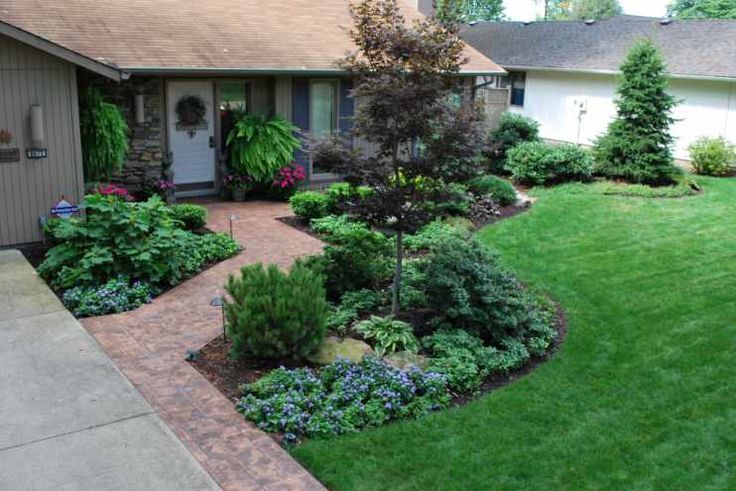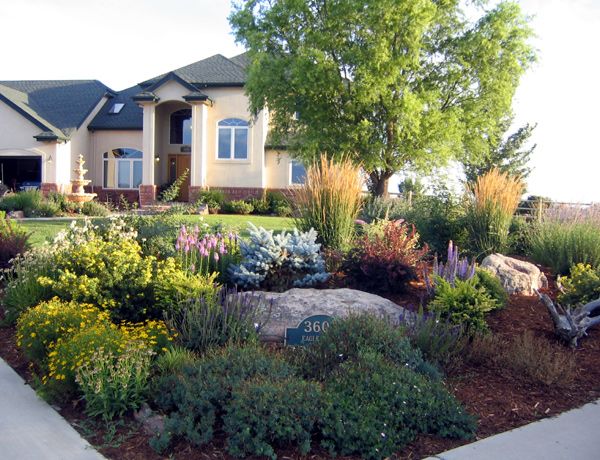Overhauling Your Landscape?
- 2022-01-06
- By mkirk
- Posted in Horticulture, The Garden Buzz
By Deena Lawrence, Colorado Master Gardener
Is your landscape ready for a refresh but not sure where to start? The task may seem daunting at first, but begin by evaluating opportunities and constraints of the existing landscape. Gather ideas and images and keep them organized. As you assemble the finer details, here are a few helpful renovation tips that might otherwise be overlooked.

Consider Mature Size
Small evergreens are cute when planted, but if mature size isn’t taken into consideration, they can get in the way of walkways, driveways and power lines as they grow. It is possible to plant a little 2′ wide evergreen and not have a problem when it becomes 10 ‘ wide if you plan well. Plant it where it will fit, even when mature. No need to leave a bare area all around the little tree. Fill that area with perennials that can easily be moved as the tree grows. If the tree is in a small planting bed to start, plan to move the edging out, expand the bed, and shrink the lawn as the tree grows. Keep in mind that irrigation will also need to be adjusted over time. At first, several emitters right on top the root ball are all that’s needed. As the roots spread out, the irrigation should also expand. Water at the dripline in order to be most effective. Remember that tree roots mostly grow out, not down.

Add Pathways
If you’ve lived in your current home for a while, you likely have a good idea where people walk most often. Add walkways to connect all the following areas with each other: driveway, public sidewalk, doors, mailbox and outdoor living spaces. Make sure it’s easy for guests to walk from the street to the front door (preferably without having to brush against cars on the driveway), and to walk to the mailbox. Is there a path to the shed from the back door of the house? And an easy way to stroll from the outdoor kitchen to the firepit area after dinner? If the yard is fenced, having a gate on each side of the house will help with flow. When adding paths, they do not all need to be of the same material or the same width. The formal approach to the front door should be 4’ wide (to allow two people to walk side by side) and of a solid material like flagstone, pavers or concrete, whereas a seldom-used path to the cutting garden or wood pile can be just 2’ wide and made of steppingstones or breeze (finely crushed rock, aka crusher fines). Choose colors that relate to the house or other existing hardscape materials.

Eschew Landscape Fabric
Fabric (also called weed barrier or felt) is best skipped for many reasons: it impedes air and water movement (it’s less bad than the black plastic used years ago, but still problematic); it actually makes weeds harder to pull as their roots get entangled in the fabric; dirt settles on top of it over time and weeds grow anyway; it breaks down into a stringy web-like mess; it impedes the growth of perennials, shrubs and trees by girdling them; and it makes adding new plants more difficult. It also gets in the way of native ground-dwelling bees; our local pollinators need all the help we can give them — please don’t seal off their habitat.
Horticulture Resources
- Garden Buzz Archives
- CSU Extension Resources
- Colorado Master Gardener Program
- Foothills to Plains Native Plant Master Program
- Native Bee Watch Community Science Program
- The Co-Hort Blog
- PlantTalk Colorado
- Soil Testing
- Plant Select
- Emerald Ash Borer
- Japanese Beetle
- Colorado State Forest Service
- Ask an Expert


